Beyond Co-Op Reviews: Renowned Explorers: International Society
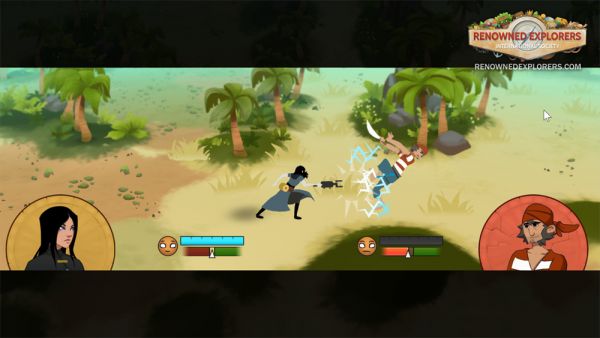
Renowned Explorers: International Society is an exceptional game that really must be played to be understood. In the following paragraphs I’ll attempt to provide some small hint of the game’s layered and nuanced brilliance, but in the end know that I’m just touching upon the surface of any of the game’s aspects. When I first played the game, I read all the tutorials and tooltips and still had no idea what was going on. As I played the game more and more, though, I felt like I was exploring and learning the system just as my in-game explorers were exploring the lands and learning how to be the best adventurers they could be.
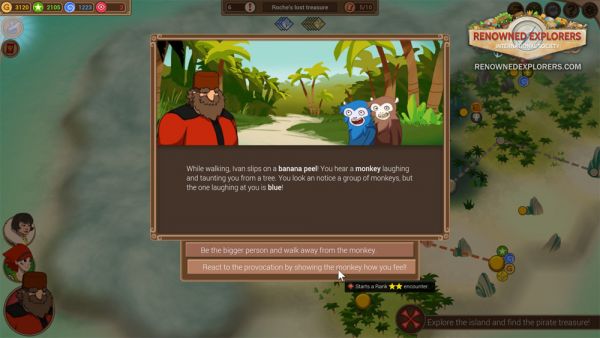
Renowned Explorers (henceforth RE) is an adventure-style, turn-based rogue-like. There are two modes: Adventure Mode and Discover Mode. Adventure Mode only saves when players close the game and the game is generally more difficult (making it a true rogue-like). Discover Mode provides a more casual options, allowing players to save whenever they want and get to new locations faster. After picking a mode, players assembled a party of three characters (a leader and two followers) from a list of 4 classes (speaker, fighter, scout, and scientist). There are 5 characters in each class to pick from, but at the beginning of the game players can only pick from 4 leaders total (1 for each class). As they play the game, though, they will be able to unlock more leader options (after completing 2-4 expeditions with followers, they can become leaders of later expeditions). Besides achievements, this is the only persistent progression I’ve found in the game after parties are defeated.
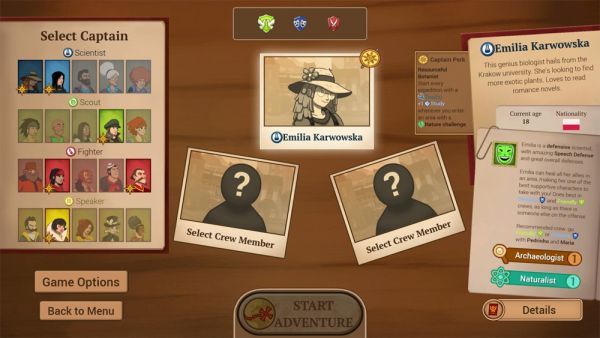
Who players choose to put in their party is an important decision. Not only do they want to try to find a good balance between classes, but they also want to consider finding a party that works together in the way the characters prefer to approach battles. Characters also have their own unique battle abilities as well as exploration mode skills (very similar to skill checks in pen-and-paper RPGs, though aesthetically, a wheel is turned instead of a die being rolled). It’s impossible to have all of your bases covered, which make choosing a party composition a very interesting and agonizing choice.
Players are tasked with beating as many expeditions are possible. Expeditions are simply maps with different routes where the team of explorers moves point by point. Players can hover over points to get a basic idea of what awaits them there (what kind of rewards they might find, what type of skill check might be involved, etc.) so they can figure out if that’s a good point for them to travel to, or if they might want to go a different way. Sometimes the points have players make some kind of choice, sometimes they trigger a battle, and sometimes they involve some kind of skill check. Usually they’ll award the exploration team with tokens which will later be broken down into different types of currency for later spending. Exploration is not unlimited, though; each movement costs at least one supply (sometimes more). The exploration team starts with a set amount of supplies and more can be found across the map, but players won’t be able to scavenge the entire map without running out of supplies. If they run out, explorers start receiving debuffs which will usually make them less effective in battle. The goal of each expedition is to make it to a certain point which culminates in a fight. If they beat it, they can progress to another expedition.
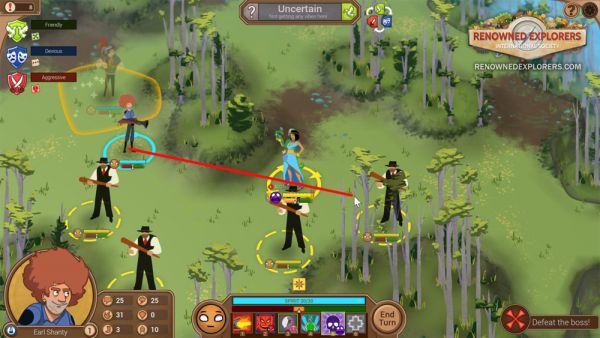
Encounters (the battles of the game) are a pretty straight-forward turn-based tactical approach on a hex grid. The explorers get a turn where they can each move and attack once, then the enemies get a turn where they get to do the same. There’s one major twist on the system, though: the mood system. In battle, each explorer gets three abilities they can use every turn: an aggressive attack, a devious attack, and a friendly attack. Yes, you can vanquish enemies by being too nice to them! Once a team uses a certain number of abilities of a given mood, their overall mode will change. What really makes it interesting is how the moods of the two sides interact. It’s a rock-paper-scissors mechanic where the entire battlefield will have certain effects based on which two moods are being expressed. These effects may include things like bonuses to a certain kind of attack, or vulnerability to a certain kind of attack.
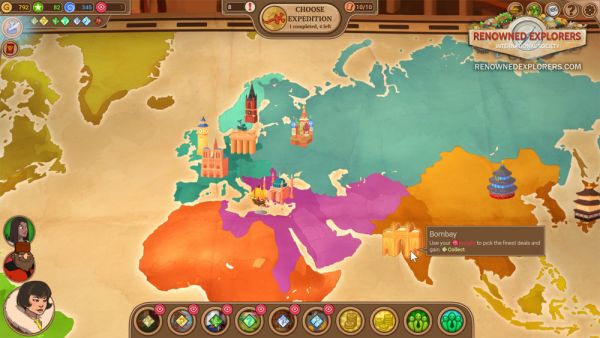
Between each expedition, the exploration team can spend the different currency they’ve acquired while exploration on different upgrades and gear. Upgrades can do things like make certain classes stronger or award more of certain types of currency. After that’s all done, players can pick between two new expeditions. The new expeditions will be of equivalent difficulty, but might be easier for a certain type of team (e.g. a team with certain types of skills, or a team that favors a particular type of battle tactic).
Again, I’ve only really scratched the surface of Renowned Explorers. If you like turn-based games or choose-your-own-adventure type games (and don’t mind a bit of a challenge), you should do yourself a favor and buy Renowned Explorers. This is truly a brilliant and special game. I’m not generally a fan of the rogue-like genre (the repetitive nature usually bores me), but Renowned Explorers made me a believer. It combines my love of theory-crafting and tactics games and provides me with a ridiculously fun and addictive challenge. Abbey Games is two-for-two with me, and I can’t wait to see what they come out with next.
5